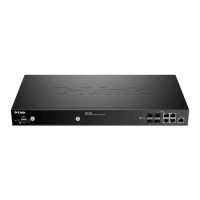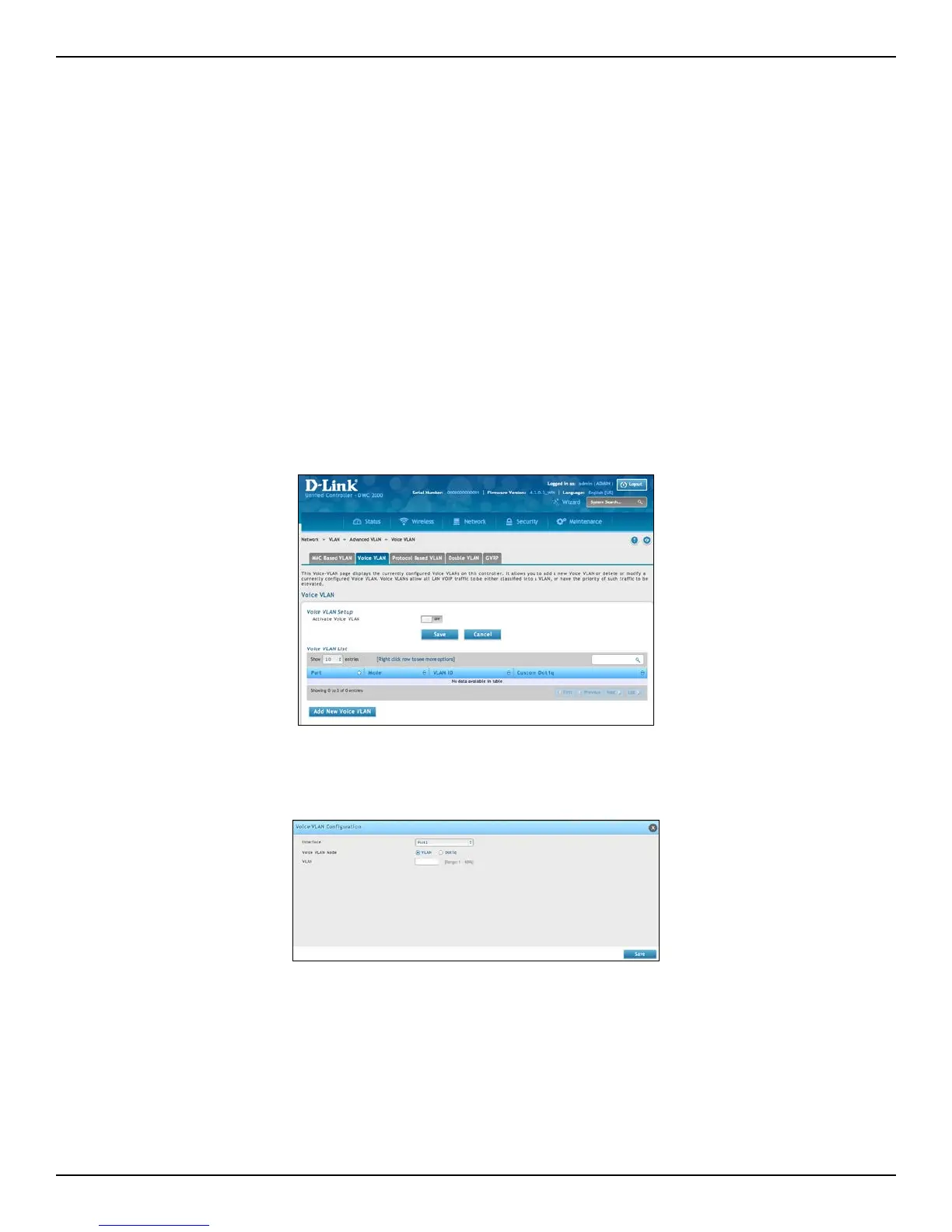D-Link DWC-2000 User Manual 138
Section 5 - Advanced Network Conguration
Voice VLANs
Path: Network > VLAN > Advanced VLAN > Voice VLAN
The voice VLAN feature enables controller ports to carry voice trac with dened settings so that voice and data
trac are separated when coming onto the port. A voice VLAN ensures that the sound quality of an IP phone is
safeguarded from deterioration when data trac on the port is high.
The inherent isolation provided by VLANs ensures that inter‐VLAN trac is under management control and that
network‐attached clients cannot initiate a direct attack on voice components. A QoS protocol based on the
IEEE 802.1P class‐of‐service (CoS) protocol uses classication and scheduling to send network trac from the
controller in a predictable manner. The system uses the source MAC of the trac traveling through the port to
identify the IP phone data ow.
Voice VLAN is enabled per‐port basis. A port can participate only in one voice VLAN at a time. The Voice VLAN
feature is disabled by default.
1. Go to Network > VLAN > Advanced VLAN > Voice VLAN tab.
2. Toggle Activate Voice VLAN to ON and click Save.
3. Click Add New Voice VLAN.
4. Select the interface and Voice VLAN mode.
• VLAN: The voice VLAN packets are uniquely identied by a number you assign. All voice trac
carries this VLAN ID to distinguish it from other data trac which is assigned the port’s default
VLAN ID. However, voice trac is not prioritized dierently than other trac.
• Dot1q: This parameter is set by the VoIP device for all voice trac to distinguish voice data from
other trac. All other trac is assigned the port’s default priority.
5. Click Save.

